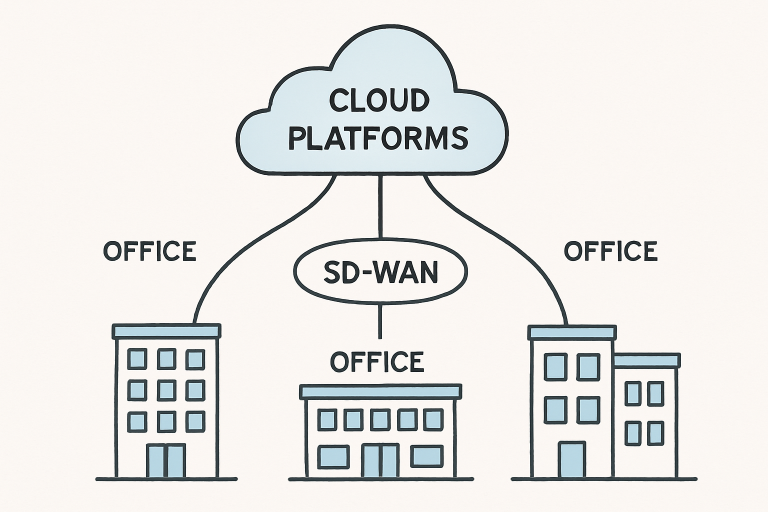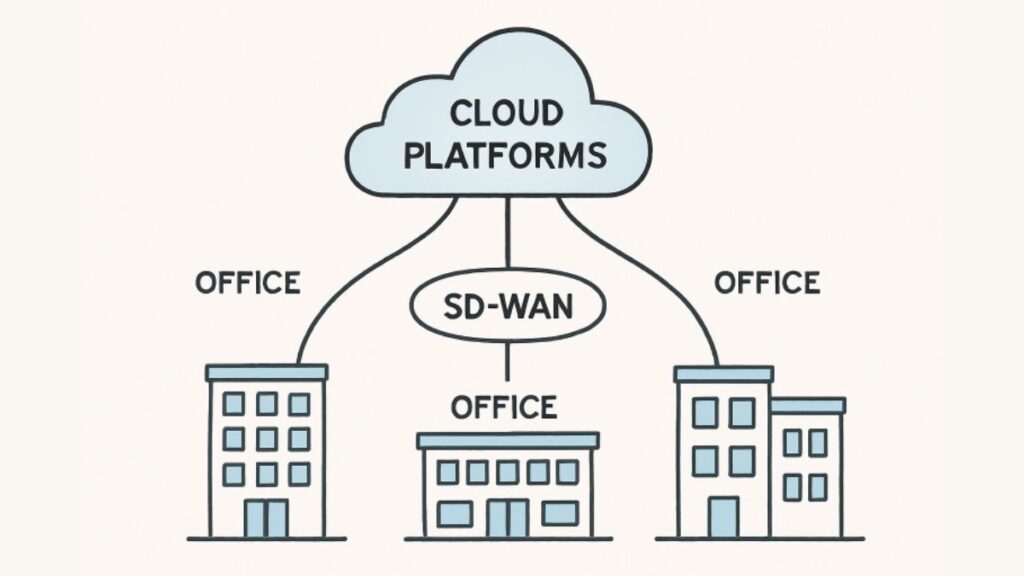Software-Defined Wide Area Networking (SD-WAN) has rapidly emerged as a transformative force in enterprise networking. By integrating enhanced flexibility, advanced security, and reduced operational costs, SD-WAN solutions are helping organizations create more resilient and high-performing networks. Modern businesses increasingly leverage SD-WAN solutions to empower distributed teams, optimize application delivery, and future-proof their digital infrastructure.
The strategic adoption of SD-WAN is fundamentally shifting the corporate network away from rigid, hardware-centric models toward software-based, agile architectures. This evolution brings considerable advantages, especially in supporting cloud migration, managing hybrid and remote workforces, and meeting real-time business agility needs. Enterprises now see networking not just as infrastructure, but as a driver of digital transformation.
Direct Cloud Access
Traditional WAN architectures often require network traffic to detour through centralized data centers before accessing cloud applications, leading to increased latency and complexity. In contrast, SD-WAN architecture supports direct cloud on-ramps, enabling branch locations and remote users to connect to cloud services without unnecessary backhauling. This improvement is critical in today’s environment, where enterprises increasingly rely on cloud-based ERP, CRM, and collaboration tools for daily operations. Direct cloud access minimizes delays, enhances application speed, and creates a better overall digital experience, vital for business productivity and customer satisfaction.
Intelligent Traffic Routing
SD-WAN brings advanced, application-aware routing capabilities previously unavailable with legacy networking. With dynamic path selection, SD-WAN automatically identifies high-priority business applications and routes their traffic over the most optimal path, whether broadband, MPLS, LTE, or 5G. This intelligent routing ensures consistent performance for mission-critical services such as VoIP, video conferencing, or cloud analytics, even during periods of high network congestion. The ability to adapt to real-time network conditions eliminates the risk of slowdowns and interruptions, directly supporting business continuity and user experience.
Enhanced Security
Managing security in a distributed enterprise network can be challenging, especially as more businesses pivot to cloud and hybrid work. SD-WAN simplifies security management by embedding features like end-to-end encryption, integrated firewalls, and intrusion detection within the network fabric. Traffic can be segmented and isolated for different departments, third-party vendors, or specific applications—helping to contain potential breaches and limit the attack surface. Modern SD-WAN solutions also support secure direct internet access from remote sites, ensuring compliance with stringent data protection requirements. Industry leaders have highlighted how SD-WAN redefines enterprise security by integrating zero trust principles and automated threat remediation. This integration allows organizations to enforce consistent security policies across all locations and users while reducing the complexity and overhead of managing multiple disparate security tools.
Scalability and Cost Efficiency
Legacy WAN approaches often required provisioning costly, specialized network hardware for every new location or branch, driving up infrastructure costs and complicating network management. In contrast, SD-WAN’s software-defined model dramatically reduces the need for proprietary hardware, making it easy to scale networking capabilities up or down as the business evolves. Enterprises can deploy multiple branch networks from a centralized cloud-based controller, significantly reducing operational overhead. This flexibility supports rapid global expansion, empowers remote branches, and frees up valuable IT resources to focus on innovation. As noted by GTT, the total cost of ownership for SD-WAN solutions is among the lowest of any enterprise networking technology.

Real-Time Network Visibility
Comprehensive, real-time analytics are at the core of SD-WAN’s appeal to enterprise IT teams. With advanced monitoring tools, IT administrators can gain instant insight into traffic patterns, application performance, and bandwidth utilization across all sites. This visibility allows for proactive troubleshooting, automated policy enforcement, and predictive maintenance—preventing disruptions before they occur. High-level automation saves time and reduces the risk of configuration errors and human mistakes. Businesses gain the operational agility and confidence needed to support customers and employees wherever they are located.
Future-Proofing Enterprise Networks
The rapid adoption of cloud computing, IoT devices, and hybrid workspaces means the demands placed on enterprise networks are evolving faster than ever. SD-WAN’s agile framework makes it easy to integrate emerging technologies without complex re-architecting. As new security threats, compliance requirements, and digital services emerge, organizations can quickly update and adapt their networking policies through centralized management. This ensures long-term network resilience, continuous business innovation, and a competitive edge in ever-changing markets.
Adaptive Connectivity
User experience remains paramount in the digital era. SD-WAN’s adaptive connectivity dynamically allocates bandwidth and adapts to network conditions in real-time, ensuring that users enjoy fast, reliable access to cloud applications, SaaS platforms, and internal resources. Employees benefit from minimal lag, video call clarity, and seamless access to collaborative tools, while customers experience consistently high service levels. The result is improved productivity, higher satisfaction, and a more adaptive, responsive business.
Sustainable Networking
The shift to SD-WAN isn’t just about efficiency—it also supports broader sustainability goals. By replacing bulky, power-hungry hardware with software-driven solutions, organizations can significantly reduce their energy consumption and electronic waste. Advanced traffic optimization further cuts unnecessary data transmissions, lowering the carbon footprint even in large-scale enterprise environments. As sustainability rises on the corporate agenda, SD-WAN positions IT leaders to lead by example, contributing to a greener, more responsible digital future.
SD-WAN is ushering in a new era of enterprise networking by making networks more robust, flexible, and aligned with the demands of digital transformation. With networking rapidly becoming a strategic business asset, organizations investing in SD-WAN are poised to unlock heightened productivity, operational agility, and long-term growth.







